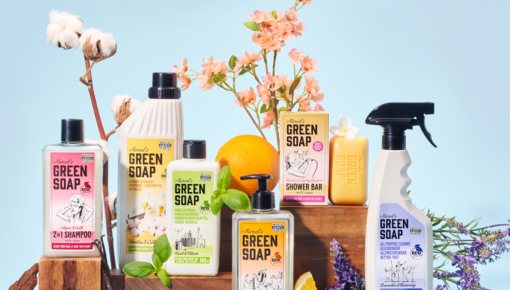
The sustainability paradox
An actionable read on how to mobilise people towards more sustainable purchase behaviour.
Climate change is a fact, and the responsibility to act rests with governments (legislation) and businesses. However, this will only happen by mobilising consumers. Consumer purchases represent about 60% of global GDP and therefore have a large weight in creating the tipping point for environmental change.
Fortunately, sustainability is becoming increasingly important for consumers, with climate change appearing as one of the biggest growing concerns worldwide (Mintel, 2022). Research has shown that 85% of consumers have switched to a more sustainable lifestyle in the past five years. Furthermore, one in three consumers say they are willing to pay a higher price for sustainable products (with a 25% increase being acceptable); at the same time, brand confidence is growing for companies who operate sustainably.
On the surface, there has seemingly never been a better time for companies to offer sustainable products and services. But there is a discrepancy between consumers’ beliefs and their actual behaviour, intensified perhaps by external factors far from their intent, such as the pandemic and current war. This discrepancy is called ‘intention-action gap’, also known in psychology as cognitive dissonance: the ‘uncomfortable tension when your attitudes and beliefs don’t match your behaviour’ (Leon Festinger). Consumers say that they care about the environment, but most are still unwilling to compromise in terms of price (#1 concern), speed, convenience, performance or anything that means a lifestyle change, regardless of whether this is merely an association or reality—a frustrating paradox.
In need of a behavioural change
People intrinsically try to remove or at least reduce their cognitive dissonance and the associated negative emotions (guilt) and will always strive for internal consistency. So how can businesses tap into that urgency and move consumers to a more sustainable alternative next to offering better affordability?
Here are six actionable points that companies and brands can use to bridge the ‘intention-action gap’, with an emphasis on improving communication around the sustainable offering:
1 Call out the positive product benefits
Inform people about your product’s positive advantages or performance indicators to compensate for potential negative associations around sustainability, such as less quality.
List multiple benefits to appeal to the broadest possible audience.
Avoid any misconceptions about sustainability premium pricing. When there is an actual price difference, give consumers access to the correct information on why there is a difference, so that consumer themselves can determine if it is worth paying more for it.
2 Explain the facts about sustainability
Educate and involve the consumer in the scientific background about what makes the product more sustainable and what this means locally or globally. Consumers often know only superficially what certain sustainability initiatives entail. Take palm oil as an example; consumers generally seem to prefer “palm oil-free” products, but many cannot tell that harvesting palm oil leads to rainforest destruction. Or they might question the alternative ingredient and its effects on people and the planet.
Ensure the facts are available to the consumer when using a sustainability claim in your communication. The Flower Farm, for instance, is a good example of how to communicate about alternatives to palm oil.
Conduct research with your consumers to map out which benefits they value. Is it using recyclable materials, sustainable sourcing, carbon neutral, or stimulating biodiversity? Pushing these most valued benefits in your communication will maximise the willingness to pay a premium if applicable.
3 Use the power of positive emotions
Instead of sharing disturbing statistics that frighten people, use information from which they derive positive feelings. In this way, they are more likely to adjust their behaviour. Research has shown that the emotions of hope and pride prove helpful when it comes to promoting sustainable consumption. Consumers want the confidence that their actions will have a meaningful impact (self-efficacy), especially when it is local.
4 Make the ‘doing good’ easy and tangible for people
Direct action is satisfying. Think of ways to make the consumer feel they are making an immediate impact when purchasing your product, leaving them with a positive feeling. An example is EcoCart, an e-commerce plugin that gives consumers a carbon-neutral option at checkout, often for a 1-2% surcharge. Or it could also be as simple as an integrated handle in your product packaging, excluding the need for an extra bag.
Assess your entire consumer life cycle and find out where you can make it as easy as possible for consumers to make sustainable choices. Focus first on simple processes (for example, reducing waste or recycling), as these have the most impact on a broader audience. When it concerns fewer common steps, ensure the availability of clear instructions to avoid frustration.
5 Harness the power of social influence
Numerous studies have shown that people conform to the behaviour of their environment out of an intrinsic desire to belong. Use this motivation by positively informing how other people act in the same situation. Here again, the more local, the better.
A well-known example is hotels indicating what percentage of visitors use the towel more than once. Or local stores showing the percent of the shoppers already buy one or more sustainable items per visit, which will likely increase the total number of sustainable purchases. Making sustainable behaviour more visible has a positive effect, as people are more likely to opt for this when others are watching.
6 Talk about sustainability at a corporate level
Build long-term trust, especially now when consumers are increasingly sceptical about brands’ sustainability claims and question corporate sustainability efforts’ sincerity.
Be honest, transparent, and show commitment and urgency to build credibility with consumers. Credibility is the key to effectiveness. Ikea is a great example of this; the company is transparent and clear and makes ambitious corporate-level steps to meet its sustainability goals. It also empowers the consumer to live a more sustainable lifestyle. All these efforts make Ikea a trusted and powerful brand that will still be relevant tomorrow.
Sustainability is not a sacrifice
The demand for sustainable products will continue to grow, so that sustainability will no longer become a USP (unique selling proposition) but a hygiene factor. While most consumers today are already pursuing a more sustainable lifestyle by recycling or composting at home, or reducing food waste, the next focus is going to be on the products they buy (or stop buying).
Businesses must invest and innovate now to remain relevant for consumers tomorrow. Those who do that create a competitive advantage. And while it may now seem that persuasion for a sustainable alternative is still needed, in the long run, the challenge will lie in continuing to sell unsustainable products.



